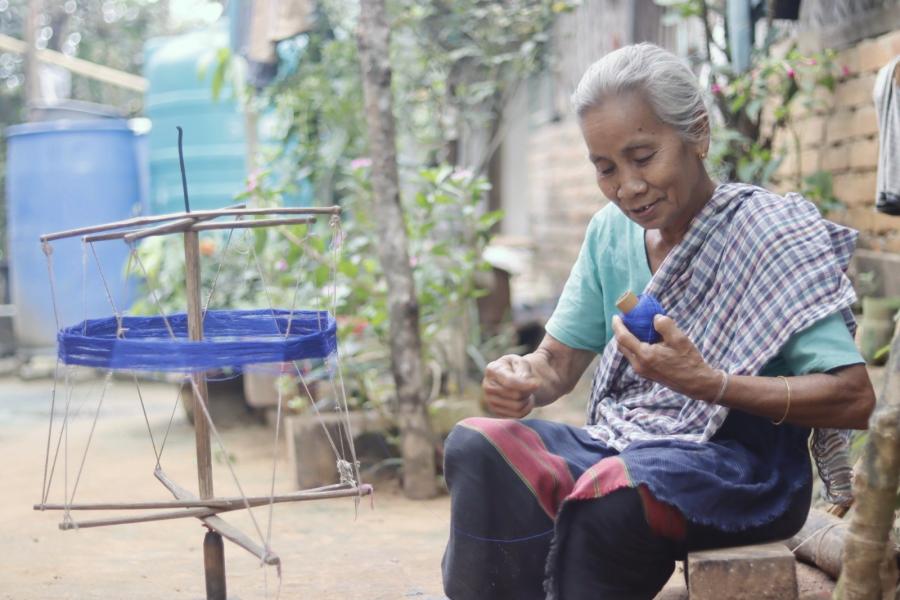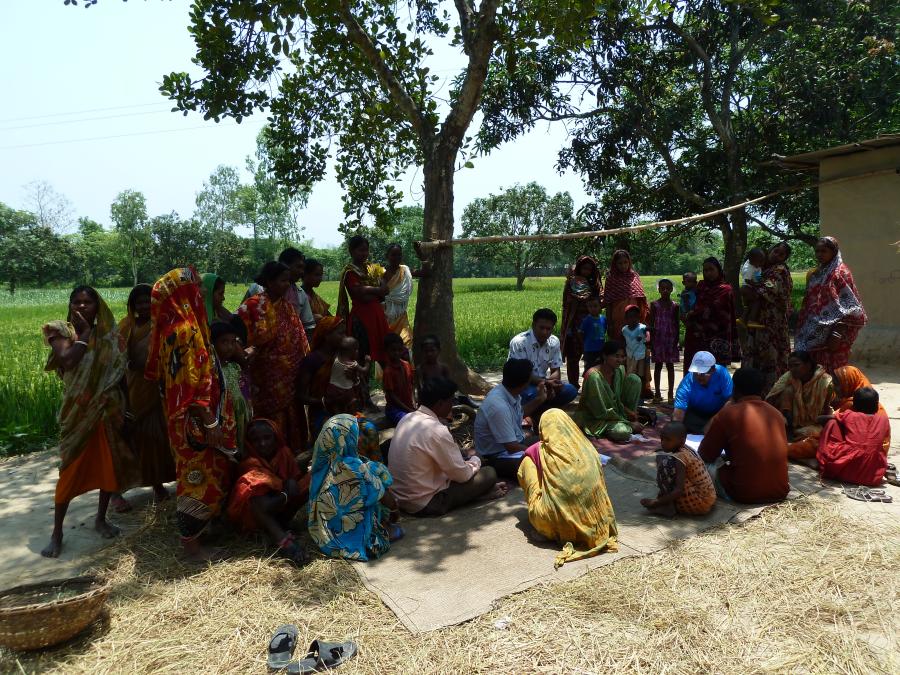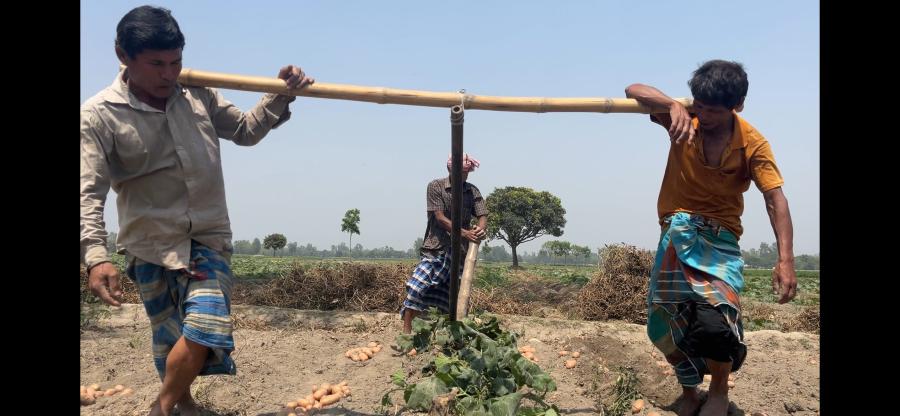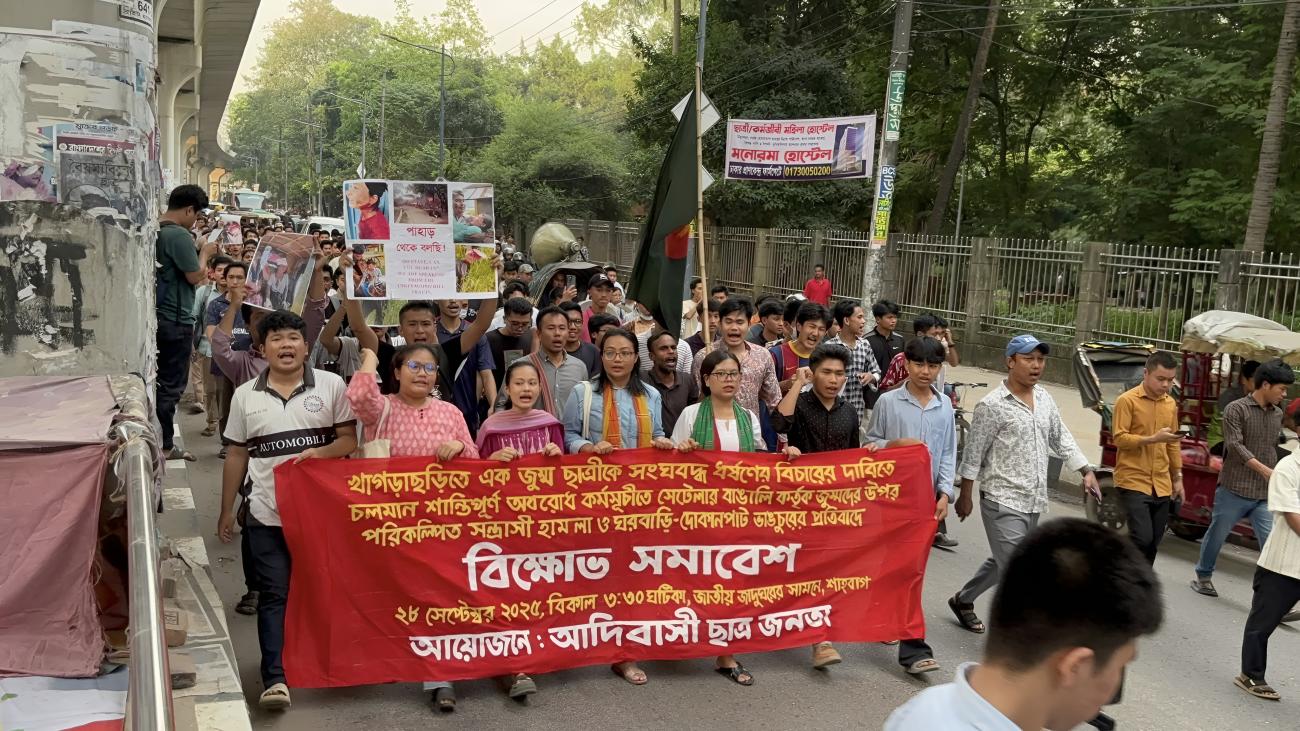
By Anonymous
The Chittagong Hill Tracts (CHT) in southeastern Bangladesh, home to 13 Indigenous communities, has long carried the weight of unhealed wounds. In late September 2025, that fragile peace was shattered once again. What began as a protest demanding justice for the rape of a teenage Indigenous Marma schoolgirl in Khagrachari District turned into a communal crackdown on Indigenous communities.
On September 23, 2025, a 12-year-old Indigenous girl was raped by three Bengali settlers while returning home from tuition in the Singhinala area of Khagrachari Sadar Upazila. Her father found her unconscious around 11 pm near the Sashan Rakshit Buddhist Monastery and rushed her home, where she confirmed the assault after regaining consciousness. When he attempted to file a case at the Khagrachari Sadar Police Station, police reportedly pressured him to describe the perpetrators as “three unidentified men” rather than “Bengali settlers.” This attempt to obscure the ethnic identity of the accused reflected a long-standing pattern of institutional bias against Indigenous victims in the CHT.
The incident triggered widespread outrage among Indigenous youths and the public. Rallies and processions were organized by various Indigenous-led organizations and student groups across the three hill districts and quickly spread beyond the region, reaching Chittagong University, Dhaka University, and the Shahbagh area of the capital, gaining national attention.
However, the State’s reaction focused not on justice, but on silencing dissent. On the evening of 25 September, Ukyanu Marma, General Secretary of the Bangladesh Marma Student Council (BMSC), was forcibly taken away by security personnel, after he had called for a mass gathering planned for 26 September through a Facebook post. He was released hours later following public pressure.
On September 26, under the banner of Jumma Chhatra-Janata, Indigenous youth groups and networks held a rally in Khagrachari Sadar demanding the arrest of all perpetrators and accountability for sexual violence in the hills. They declared a half-day road blockade for the next day. Later, one suspect, Shoyon Sheel, was arrested, but protests continued to demand the arrest of all involved.
The half-day blockade began peacefully in the morning of September 27. However, around 10 am, violence erupted when Bengali settlers clashed with Jumma protesters in Narankhaiya, Khagrachari Sadar. By 2 pm, the district administration imposed Section 144 to control the situation. Despite the restrictions, around 7 pm, two more groups of Bengali settlers attacked Indigenous-inhabited areas.
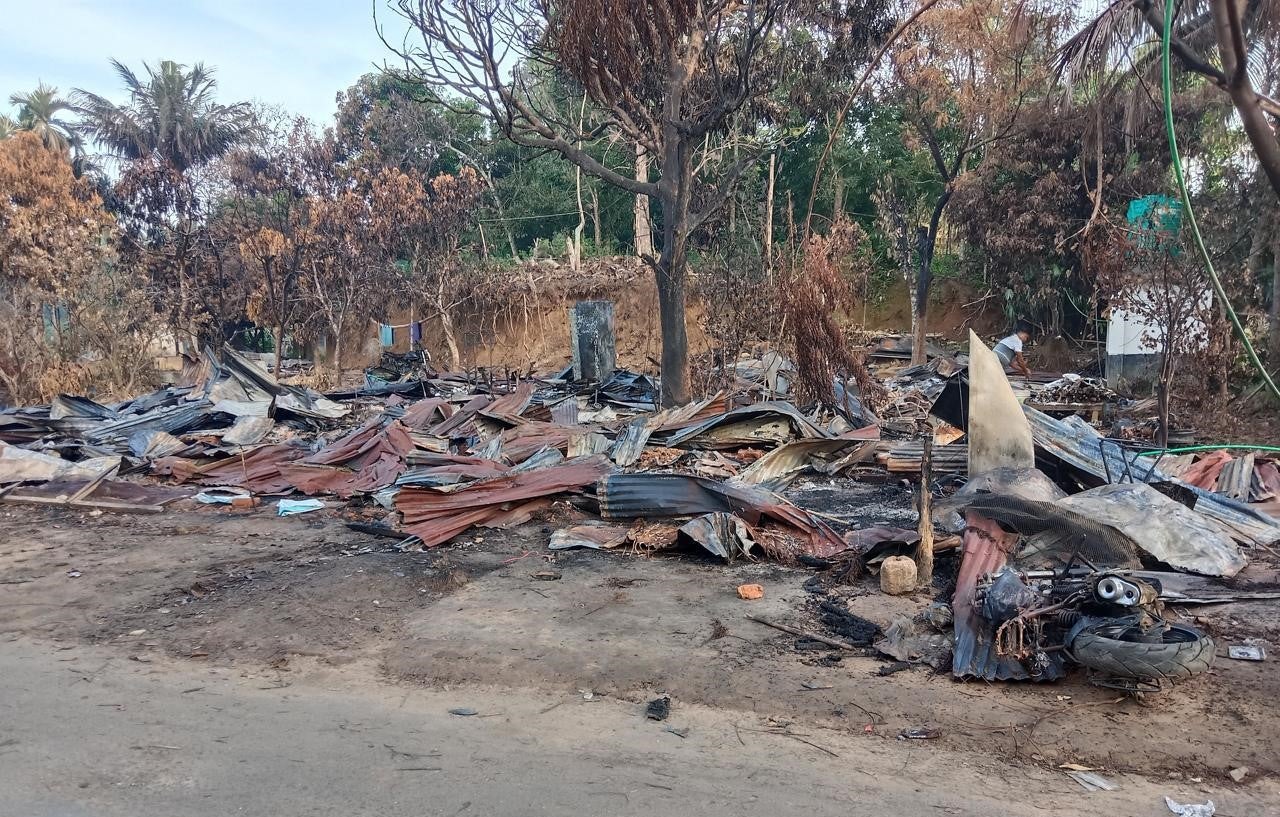
According to local eyewitnesses, the attacks were coordinated, with settlers targeting Indigenous neighborhoods while law enforcement failed to intervene. These were not spontaneous clashes but assaults allegedly supported by armed men in plain clothes. The attackers looted and set fire to Indigenous houses, shops, vehicles, vandalized an ambulance, and spread false claims on social media. Moreover, security forces reportedly opened fire with live ammunition.
On the second day of the blockade, the violence escalated in Guimara Upazila of Khagrachari district, especially near Ramsu Bazar. Three Indigenous youths—Akhra Marma (22), Thowaiching Marma (20), and Athuipru Marma (21)—were killed, while many others went missing. At least 20 others were injured, fifty-four Indigenous-owned shops and 26 houses were burned, as documented by Parbatya Chattagram Jana Samhati Samiti (PCJSS).
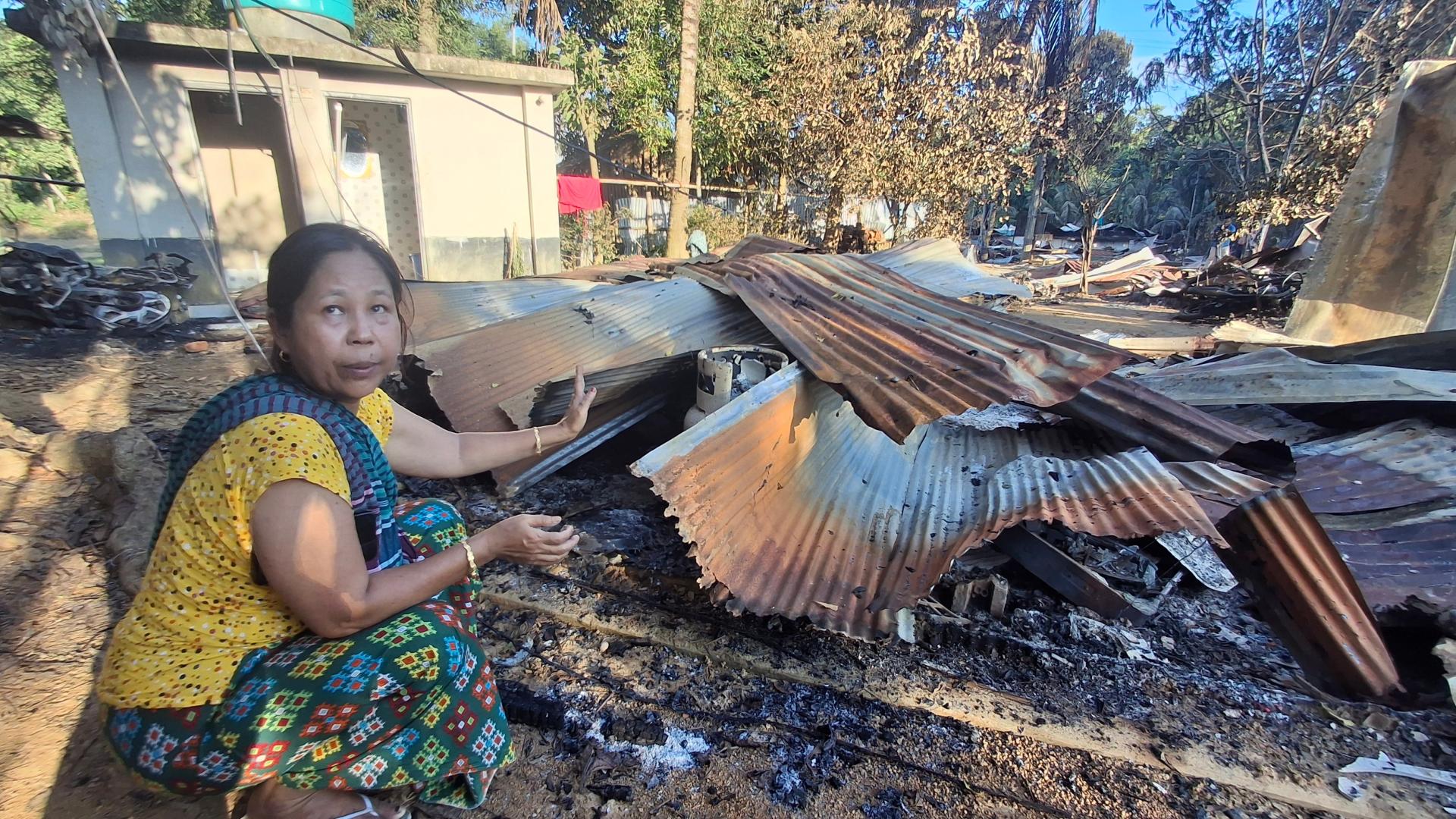
A woman, whose house was burned, recounted, “I had to dive into the river with my sick mother to hide and save ourselves while they burned our house.”
Villagers also report that law-enforcement officers began confiscating personal mobile phones and digital devices to erase photographic and video evidence of the attacks. Within days, a general warrant was issued for over 100 unnamed individuals. Young Indigenous men fled into nearby forests or crossed into adjacent districts, fearing arbitrary detention. Displaced families are now staying in monasteries, schools, and temporary shelters, relying on community aid for their survival.
In this ongoing struggle, another wound was inflicted. A leading Bangladeshi outlet, Jamuna TV, published the medical report of the survivor on September 30. Under standard legal and journalistic ethics, such reports are confidential, particularly in cases involving minors and survivors of sexual violence.
Soon, the focus of public debate shifted from justice for the survivor to doubt over her story; thereby, criminalizing the protestors and silencing truth-seekers.
For Indigenous Peoples, this incident is not an isolated tragedy—it is part of a continuum. Similar attacks in Langadu in 2017, in Baghaichhari in 2019, and in Khagrachari in 2024 followed the same script: a triggering incident, a law-and-order narrative, and collective punishment of Indigenous Peoples. Since the signing of the Chittagong Hill Tracts Accord in 1997, at least 22 communal attacks have taken place in the CHT under the watch of State and local authorities.
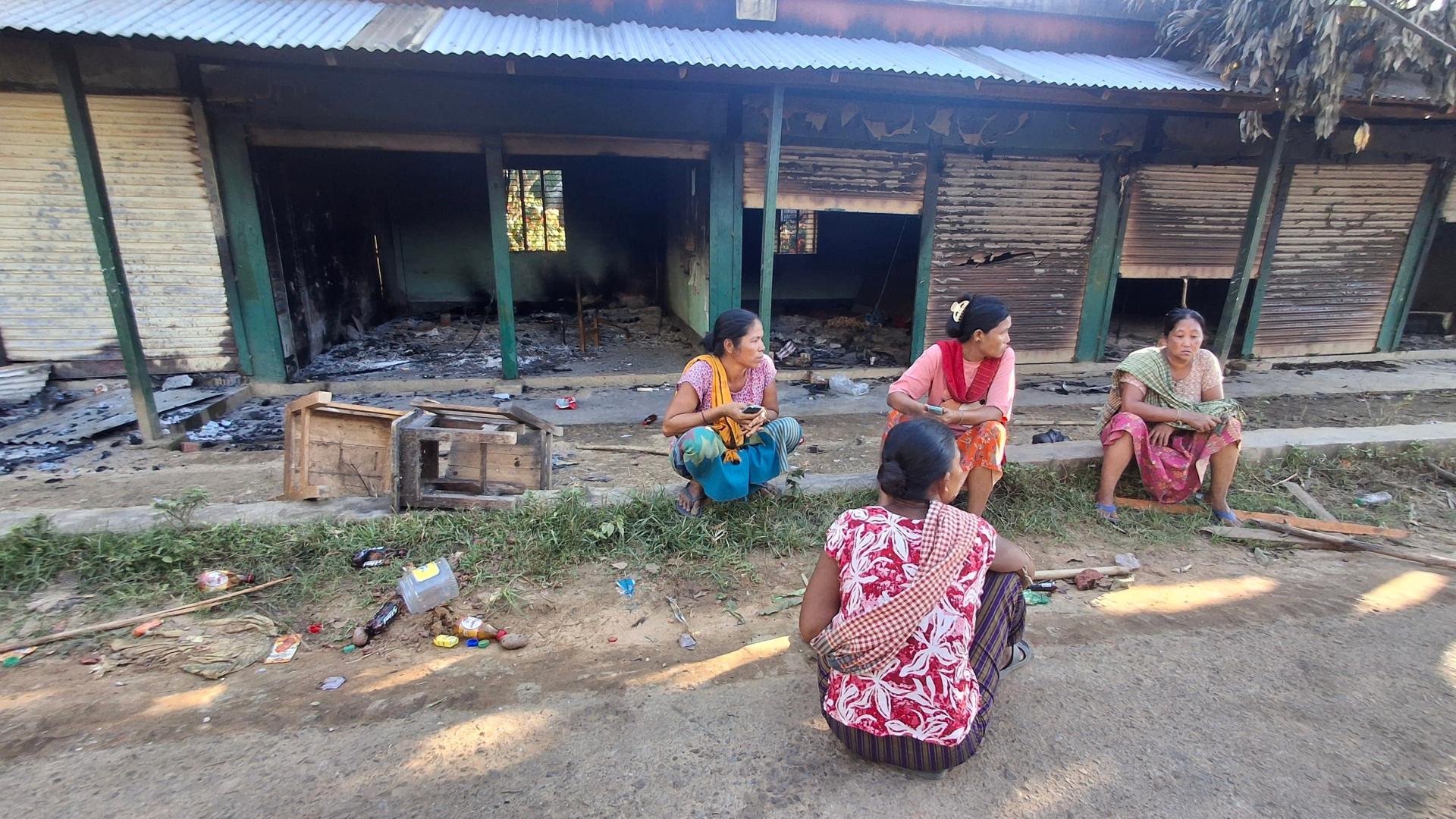
Indigenous women are often the main targets in this repeating cycle of violence. According to the Kapaeeng Foundation, from January to July 2025, 24 incidents of violence against Indigenous women were documented. From 2020 to 2024, reports from the Kapaeeng Foundation and International Work Group for Indigenous Affairs (IWGIA) reveal a consistent pattern of violence against Indigenous women in Bangladesh, with at least 61 cases in 2020, 42 in 2021, 21 in 2022, 24 in 2023, and 17 in 2024. However, these figures are under-estimated. Drawing on available evidence, only about 28–30 % of cases are ever filed with the police due to fear of reprisals, stigma, and almost none result in convictions. This invisibility is also a result of the lack of disaggregated national data—such as the Violence Against Women Surveys (Bangladesh Bureau of Statistics and UNFPA)—on Indigenous women, which further reinforces their underrepresentation and obscures the true extent of violence they face.
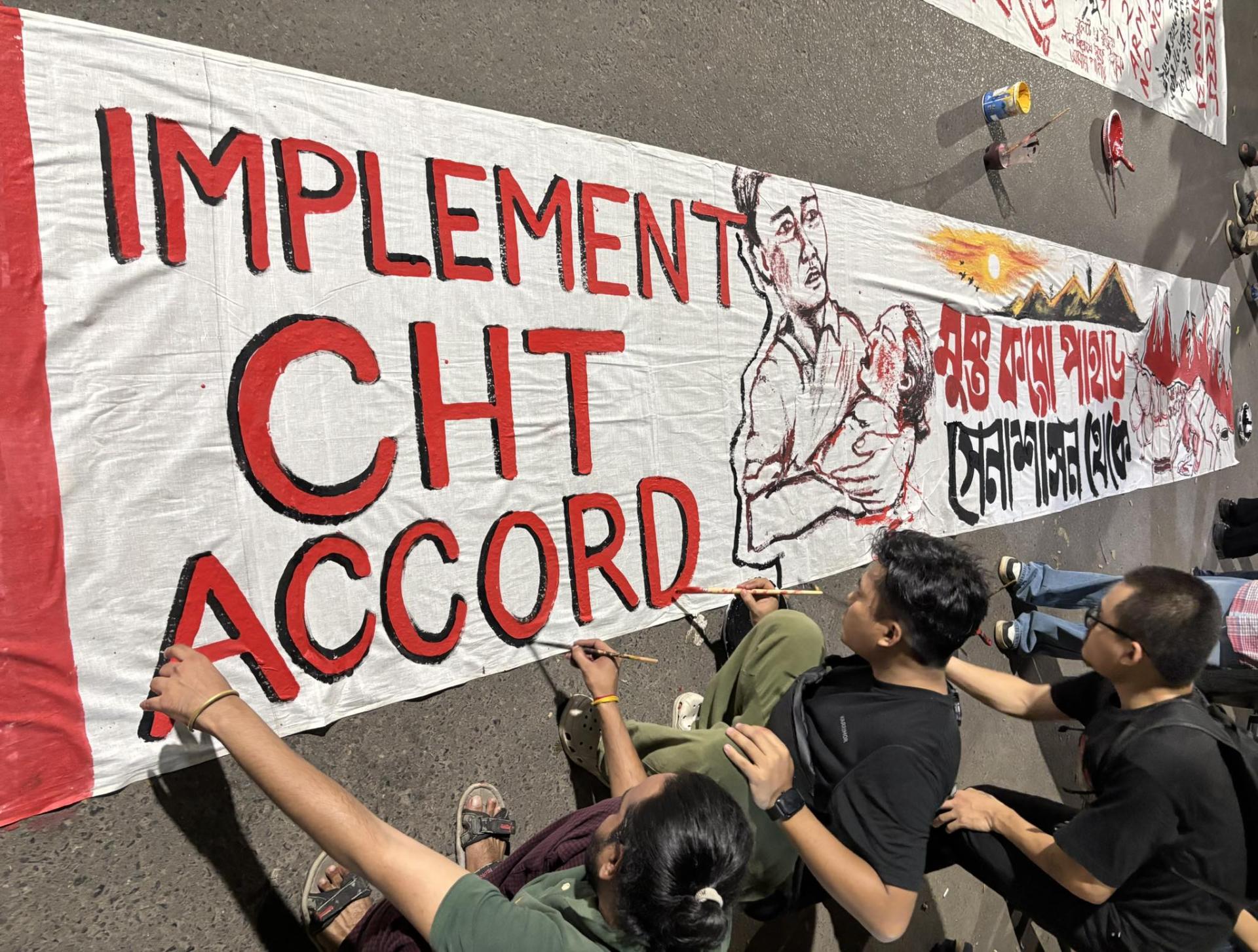
These recurring cycles of violence and invisibility reveal a State in denial—that continues to deny justice and treat Indigenous identity as a threat to the national order. To break this cycle, the government of Bangladesh must take immediate and concrete steps toward the full and meaningful implementation of the Chittagong Hill Tracts Accord.
Yet, even amid repression, Indigenous Peoples continue to rise—asserting their right to justice, dignity, and peace. Their struggle echoes far beyond the hills of Bangladesh, and it is part of a global Indigenous movement, not only for survival but also for accountability of States to uphold international obligations, protect ancestral lands, and end impunity. True healing can begin only when justice is served, truth is acknowledged, and Indigenous Peoples are heard and respected as equal citizens of their own land.
Top photo: Protest Rally in Dhaka 28 September 2025.
